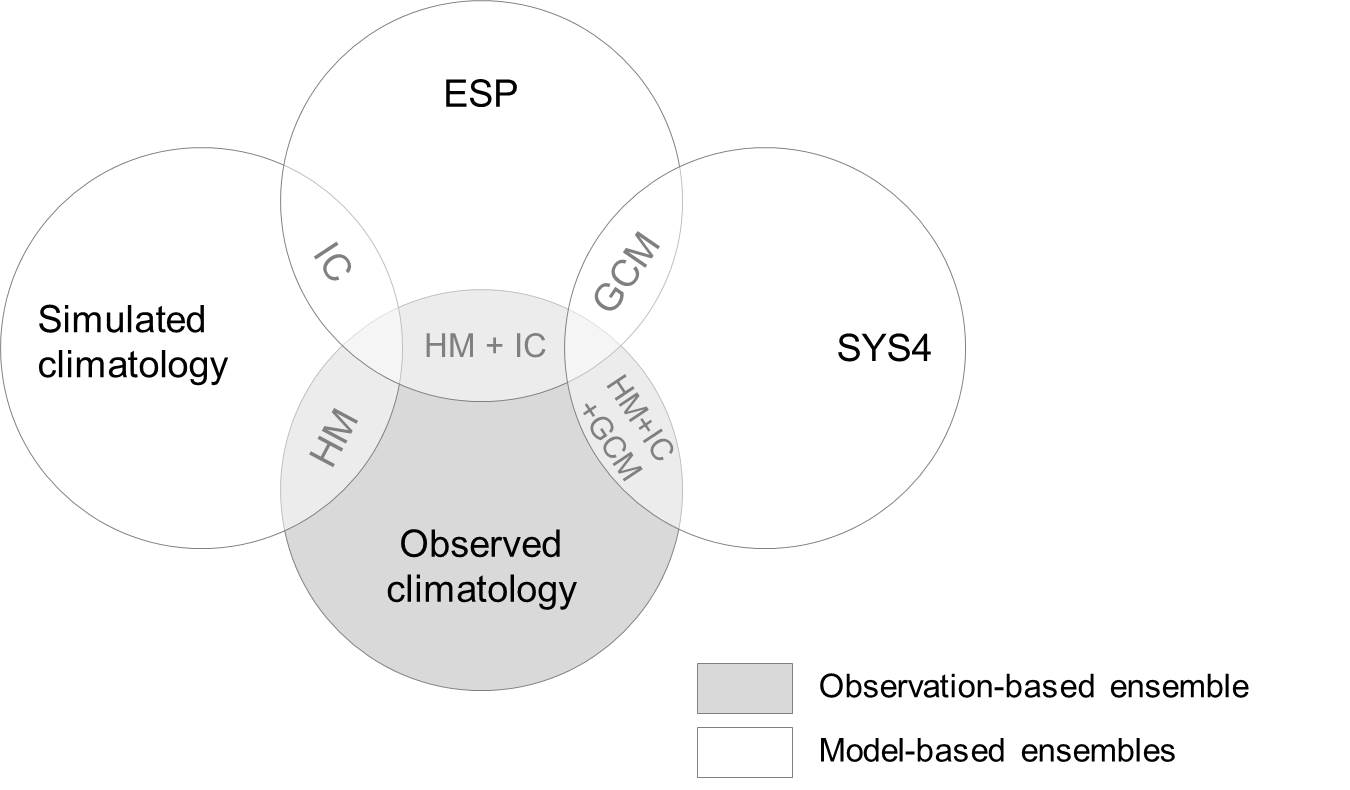Can seasonal hydroclimate services be a success story for local applications? Some answers based on a French case study!
Contributed by Louise Crochemore (SMHI), Ilias Pechlivanidis (SMHI) and Maria-Helena Ramos (INRAE).
Hydroclimate services are increasingly available…
An increasing number of hydroclimate services provide readily available water predictions to users at the catchment scale. For example, in Europe:
- Local to global services based on products from the Copernicus Climate Change Service (C3S) have been developed for the hydropower, water resources, flood risk prevention and agriculture sectors within the H2020 CLARA project.
- The H2020 S2S4E project has co-developed a decision support tool for the energy sector with various European users.
- The H2020 IMPREX project proposed a seasonal risk outlook to anticipate hydrological extremes.
- The SMHI’s Hypeweb platform displays medium-range and seasonal forecasts for a variety of geographical domains.

The S2S4E Decision Support Tool for the energy sector

The SMHI’s Hypeweb seasonal forecast tool for Europe
… but not necessarily increasingly being used by local water managers
For users who do not develop or do not have specific hydrological models available for their daily operations, continental-wide hydroclimate services can fill a gap. The hydroclimate information can then be of use, provided that the models implemented in the services represent the processes and dynamics of water flows sufficiently well and that users are trained to extract the information they need.
However, for many users who already have their own local hydrological models, with trustful and reliable local data and consolidated methods, questions may arise on how useful such services might be: Why should we use these large-scale services? Why should we pay for them? Is it worth putting human and financial resources to implement the information from these news services in our water management practices?
In Sweden, for example, decision-makers for hydropower generation base their decisions on locally setup hydrological models and tailored modelling chains. They have long used the Ensemble Streamflow Prediction (ESP) approach (in which past precipitation and temperature scenarios are used to describe future possible forcing scenarios; see this great blogpost about the ESP approach!). ESP has been proven to be hard to beat in terms of forecast skill, especially so in catchments with large water storage capacity. However, the method has its limitations when predicting unprecedented extremes. A switch to using forecasts from climate models is not straightforward because of the implied costs and the lack of strong evidence that climate seasonal forecasts significantly improve over systems used in business-as-usual operations.
Can these large-scale services convey useful seasonal information for local decision-making?
Recently, we investigated this question by looking at the case of seasonal hydrological forecasts issued by a continental model (the E-HYPE hydrological model used in the Hypeweb European service), and a locally-calibrated model (the GR6J hydrological model) over a set of catchments in France.
We first compared the historical simulations from the two models in terms of water balance, and across a set of flow statistics (such as anomalies or percentiles), at different time aggregations. In a second step, we compared the models in forecasting mode, when fed with ECMWF seasonal forecasts. Finally, we looked at how uncertainties flow through the models, looking at meteorological inputs, soil moisture and streamflow.
Our results highlighted that:
- Hydroclimatic services can provide accurate predictions at the catchment scale when predicting streamflow anomalies (changes relative to normal conditions) or detecting flows below or above normal conditions. These statistics can be entirely computed in the ’model world’, meaning that the forecast is interpreted against the model climatology. However, such statistics will only convey accurate information if time dynamics are correctly represented by the large-scale model.
- Continental hydrological services often use consistent meteorological datasets throughout the forecast production steps (including, bias-adjustment, forecast initialisation, model calibration). In our study, the local model was run with meteorological forecasts from the continental service. These were thus not bias adjusted against the local observations used in the local model setup. This issue allowed the E-HYPE model to take better advantage of seasonal meteorological forecasts than the GR6J model, since the dataset used as reference in the bias adjustment of the seasonal meteorological forecasts corresponded to the dataset also used in the continental model calibration and setup.

When evaluating seasonal forecasts against observations, (upper row), the catchment setup (GR6J) performs better than the continental one (E-HYPE). However, when models are evaluated against their own climatology (bottom row), we observe that the continental setup can outperform the local one [source: Fig. 7 in Crochemore et al., 2020]
An evaluation framework to isolate components of the forecasting chain
A skill evaluation framework to isolate the components of the forecasting chain, namely, the hydrological model (HM), its initialisation prior to the time of forecast (IC), and the meteorological forcing (GCM), can be very valuable. The framework allows the analysis of the sources of seasonal forecasting skill for a specific location. In our case, both hydrological models had similar proportions of skill from ICs and GCMs, although the E-HYPE model had potentially some advantage over the GR6J model in incorporating ECMWF forecasts.
Combinations of ensemble systems and benchmarks for seasonal forecast skill evaluation. Intersections between circles indicate the evaluated component of the forecasting chain: the hydrologic model (HM), the initialization of the forecasts (IC) and the use of GCM forcing (GCM) [source: Fig. 4 in Crochemore et al., 2020]
To read the full article:
- Crochemore, L., Ramos, M.‐H., & Pechlivanidis, I. G. (2020). Can continental models convey useful seasonal hydrologic information at the catchment scale? Water Resources Research, 56, e2019WR025700. https://doi.org/10.1029/2019WR025700
To read more about the research projects mentioned here:
- H2020 CLARA: http://www.clara-project.eu/project/
- H2020 IMPREX: https://www.imprex.eu/
- H2020 S2S4E: https://s2s4e.eu/
0 comments